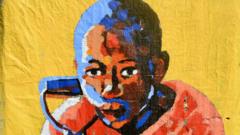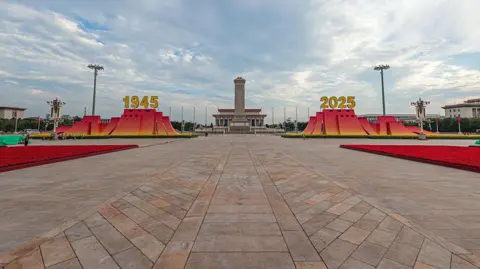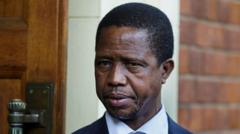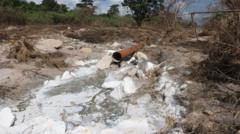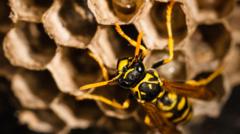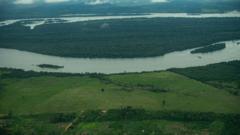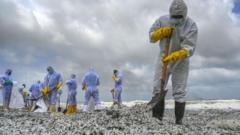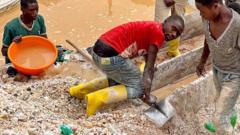Artist Stary Mwaba is shining a light on the troubling legacy of Zambia’s notorious "black mountains"—massive heaps of mining waste that loom over the Copperbelt region. Born and raised in this area, Mwaba reflects on his childhood experiences, revealing a personal connection to the toxic landscapes. “As kids, we used to call it ‘mu danger’—meaning ‘in danger,’” he recounts. "These mountains were places to avoid, yet we couldn’t resist venturing in for wild fruits that somehow grew there."
Fast forward to today, and the same landscapes attract young men digging for copper ore among the toxic heaps, a byproduct of over a century of mining. They navigate hazardous tunnels in search of fragments to sell to buyers, often connected to Chinese enterprises. This work is fraught with danger and legality issues, but for many in a region with youth unemployment nearing 45%, it represents a desperate path to survival.
Mwaba’s latest exhibition at the Lusaka National Museum tells the poignant stories of these young miners from Kitwe, illuminating life in the Wusakile neighborhood. They often work for gang masters known as "jerabos," a term implying a connection to criminality. Through a series of vibrant portraits painted on old newspapers, Mwaba utilizes found materials to intersect “grand narratives” with the “little narratives” of the individuals depicted.
Mwaba employs innovative techniques by burning away sections of newspaper to create holes, where he then infuses paint to showcase portraits. This represents not just their likenesses but the fragmented nature of their experiences. “These little narratives matter too,” he affirms, emphasizing the importance of individual stories in the broader context of societal struggles.
The artist’s works portray various elements of life in Wusakile—from instrumentalists of local church groups to children creating joy from makeshift swings fashioned from discarded materials. One striking piece, titled Jerabo, depicts a miner preparing to descend into a perilous tunnel with safety equipment, underscoring the dangers these young men face daily.
With the harsh reality of industrial waste visibly affecting community health—evidenced by a recent catastrophic waste spill disrupting water access in Kitwe—Mwaba’s narrative deepens. He takes part in drawing and performance workshops within these communities, gathering firsthand accounts of resilience amid adversity.
Motivated by his family’s mining legacy and personal history, Mwaba started focusing on the mining theme in his work following an educational project with his daughter in 2011. His initial exploration, which focused on the influence of Chinese mining practices, evolved as he returned to his roots in Kitwe, a location that left him saddened by its drastic transformation over the years.
As he charts the intersection of personal and communal histories, Mwaba wishes to challenge narratives that often overlook the experiences of individuals trapped in cycles of exploitation. “The black mountain has become a means of survival, but it also takes so much away,” he reflects. Through his art, he offers a voice to those often silenced by their circumstances, portraying not just struggles but moments of joy and humanity among the shadows of Zambia’s mining legacy.

